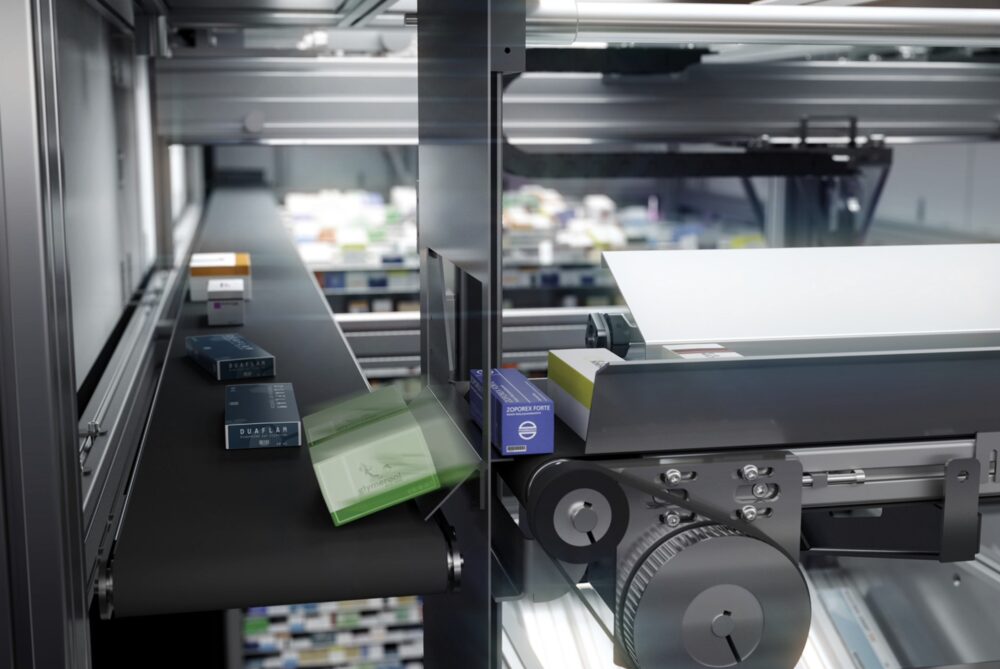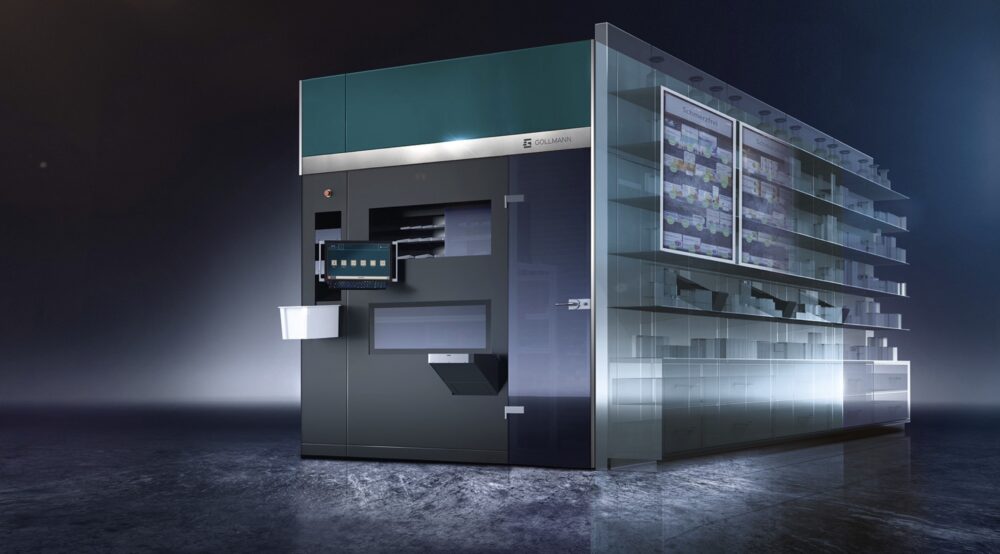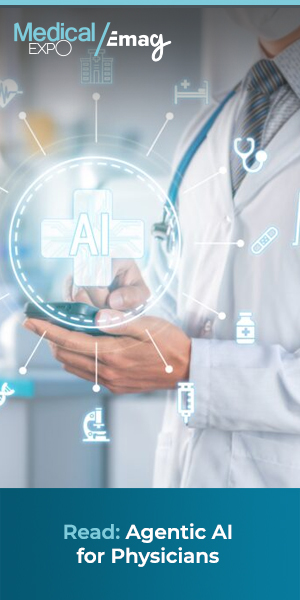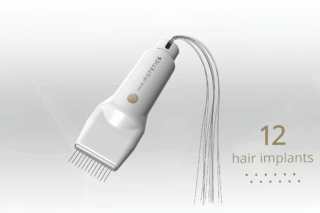Gollmann has recently implemented AI to its 20+ years’ experience in robotic pharmacy and hospital automation. Here’s why.
In pharmaceutical facilities—from community pharmacies to hospitals—automation has long been a tool to reduce human error, speed up dispensing, and make better use of space. But as data becomes more accessible and algorithms more capable, many companies are adding AI on top of their robotics.
GOLLMANN, a German manufacturer with over 20 years in robotic pharmacy and hospital automation, has recently introduced AI functionalities into its dispensing systems. By combining its proven robotic hardware—particularly its moving (rolling) shelves—with AI monitoring for expiry, empty slots, and other decision support tasks, GOLLMANN is attempting to close the gap between mechanical automation and smart automation. The result: higher efficiency, safer workflows, and better utilisation of facility space.
Moving Shelves, Modular Design & Tailored Solutions
Since its founding in 2006, GOLLMANN has built a reputation for custom-made automated dispensing systems for pharmacies and hospitals. At its headquarters in Germany, components are built in-house, enabling flexibility in design.
A key differentiator is GOLLMANN’s rolling-cabinet technology, which is patented. Instead of static racks or fixed gripper areas, individual racks slide on rails so they can be compacted together when not being accessed. This allows the system to store up to 50 percent more products in the same floor space compared to conventional robots, or conversely, achieve the same capacity with about 30 percent less space.
The company has also developed variants tailored to different use-cases. Pharmacy and retail systems are designed to handle a wide mix of medications, where speed of service and compact footprints are critical. In contrast, hospital systems must cope with frequent restocking, very high request rates for certain items, and integration with ward supply chains. For this setting, GOLLMANN offers its “RAPID” module, a high-frequency dispensing system that can handle up to 2,000 retrievals per hour in double-gripper configurations.

The AI & Robot Duo: How They Work Together
The AI does not replace the robot; it augments what the robotics already do. GOLLMANN’s AI layer works in parallel, feeding data, monitoring conditions, and triggering actions, while the physical tasks of moving shelves, retrieving, and dispensing remain under robotic control.
“The robots do the heavy lifting… but the AI makes the smart calls — like spotting expired meds and flagging empty slots,” Timo Böttcher, Head of Service at GOLLMANN, said in an interview with MedicalExpo e-Magazine at expopharm in September 2025.
He also emphasized the company’s aim to reduce human intervention in routine checks, adding:
“We want the system to talk to us via data: tell us what to discard, what’s missing.”
Some of the concrete AI functionalities GOLLMANN has already added include expiry-date recognition, empty-slot detection, and data support for stock decisions. The system can identify soon-to-expire and expired packs in real time, reducing the risk of invalid medications being dispensed. This includes reading printed expiry data or securPharm markings. The AI also monitors storage slots so that empty spaces are noticed and refilled in time, minimizing wasted space and preventing shortages. By collecting and analyzing inventory, usage, expiry, and slot data, the AI assists pharmacists and hospital staff in deciding what to discard, when to restock, and how best to organize storage.
The combination of robotics and AI delivers measurable improvements, from reducing the number of expired medications to improving stock reliability, minimizing manual checks, and ensuring greater compliance with safety standards.
Pros and Cons of AI in Pharmaceutical Automation
The advantages of applying AI to pharmaceutical automation are increasingly evident. Reducing waste and costs is a major benefit, as expired stock has long been a source of inefficiency. AI systems can identify these automatically and prompt their removal or usage before expiry. Published studies indicate that AI-driven inventory management can cut expiry-related losses by double-digit percentages.
Another advantage lies in improving safety and compliance. Automated expiry recognition reduces the risk of dispensing expired or invalid medications, while real-time monitoring strengthens traceability. AI also supports regulatory requirements more reliably, such as the securPharm system in Germany.
AI also contributes to better stock availability, since empty-slot detection and usage pattern data help pharmacies and hospitals anticipate shortages and reorder proactively rather than reactively. In other parts of the industry, demand forecasting has become one of AI’s most significant contributions to healthcare inventory.
The challenges of introducing AI are equally important to recognize. The quality of data is critical; inaccurate inputs such as misread barcodes or incorrect expiry information can degrade performance. Implementation also comes at a cost, as retrofitting AI modules, training staff, and integrating with existing IT systems require capital and time. Regulatory and liability issues remain complex: when AI flags medication for removal or highlights a stock gap, clear responsibilities must be established in case of errors. Finally, there is the risk of overreliance on automation. While AI and robotics can handle much of the routine work, human oversight remains essential to safeguard patient safety.
Examples from the broader industry confirm these points. Case studies have reported reductions of up to 25–35 percent in shortages or overstock when AI is applied to pharmacy inventory. Losses from expiry have in some cases dropped by 15–20 percent thanks to automated tracking. Patient safety has also improved, as real-time checks prevent expired or incorrect medication from being dispensed.
Next Steps: Where AI Needs to Go in Pharma Automation
Looking ahead, several developments seem particularly promising. Predictive forecasting will likely be the next frontier, allowing systems not only to identify what is expiring or missing but also to anticipate demand surges such as seasonal flu or epidemics and adjust inventory accordingly. Better interoperability will also be key, with AI modules needing to communicate seamlessly with pharmacy and hospital management systems, electronic health records, and supplier databases.
Advances in computer vision are expected to expand functionality beyond expiry-date reading to include checks for packaging integrity, detection of damage, and counterfeit prevention. At the same time, regulatory frameworks must keep pace, ensuring AI systems are validated, certified, and legally robust. Another important development is scalability. As GOLLMANN is already demonstrating, AI must be offered as a retrofit option so that smaller pharmacies and older hospital systems can access its benefits without a complete rebuild.
As AI and robotics work hand in hand, the pharmaceutical sector moves closer to a future where systems do not just execute commands but anticipate needs, enhancing care both in hospitals and community pharmacies.











